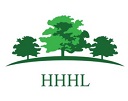



From around 4000 BC (Neolithic or Stone Age) arable and stock farming became established across Britain. Ground and polished stone axeheads, purpose-made arrowheads, sickles, grinding stones (querns) and pottery were used for the first time.
The flint mine complex at Grimes Graves includes more than 400 vertical mine shafts, all of which were created between 2700 and 2200 BC. Pollen analysis from other sites shows that emmer wheat and barley were being grown and sheep, pigs and cattle kept though probably on temporary sites rather than in permanent settlements. The finding of Neolithic artefacts suggests these were mostly in the river valleys with the higher ground (such as High Lodge) cleared of its woodland and used as pasture.
There is evidence of Neolithic people having used the land at High Lodge.
The Suffolk Historic Environment Records note a prehistoric ditch and scatters of burnt flints; worked flints and waste flint flakes.
Copper and bronze (an alloy of copper and tin) were first introduced into Britain around 2500 BC, hence Bronze Age.
In the Early Bronze Age, burial mounds were constructed, with environmental evidence suggesting they often stood in open landscape of arable and pasture with limited areas of woodland. Three possible burial mounds have been recorded in the High Lodge Forest Block though not in the immediate vicinity of High Lodge.
The burial mounds that have been identified in the High Lodge area are of the 'Round Barrow' type. Some are clearly visible to the observer as they appear as circular mounds slightly raised above the surrounding land, or occasionally as depressions.
Barrows or burial mounds are thought to have been features of significance in the landscape. They were placed just below the brow of a hill or ridge, where they could be seen at a distance to be recognised and be venerated. Another theory that may be linked to the former is that they marked the boundaries between the territories controlled by different tribes or chiefs.
See our page on Burial Mounds for more information.
That the area was important during the Iron Age is evidenced by the major sites at Barnham and at Thetford (Gallows Hill, Thetford Castle and Thetford Red Castle) which were defensive but also ceremonial and tribal centres for the Iceni.
Pottery fragments found at High Lodge provide evidence for an Iron Age farmstead at High Lodge.
Roman sites were located more along the 'fen edge' to the west and in the river valleys. A few pieces of Roman pottery found at High Lodge suggest that there might have been a small settlement here, perhaps a continuation of occupation from the Iron Age.
The Suffolk Historic Environment Records note a bank and ditch of the late Roman period with some pottery fragments.
Though there is no direct archaeological evidence for Saxon settlement at High Lodge itself, the entry for Santon Downham in the Domesday Book is evidence that there was a settlement close by.
There were four manors listed:
By 1200, these manors were named as
Downham Ixworth must have included Downham Warren, as it was owned by Ixworth Priory. Exactly when the warren as established isn't yet known, but it was in existence by 1400 and other warrens in the area date back to the 1280s.